Welcome to the Unit History page! As we establish this site the objective of this area is to provide place to share, promote and illuminate the history of this "quiet" but watchful Unit. Click the below link to see new articles, our Roll of Honour or peruse the bite size reads as you scroll down.
The Andy (who put that tree there) Ward Trophy
The Unit still has a cabinet of bits and bobs that people have brought back to the unit over time from their various operational travel’s. There is also a Trophy sitting on the side of the Crew Room. It’s a Golf Trophy and as you can see it is called “The Andy (who put that tree there) Ward Trophy”.
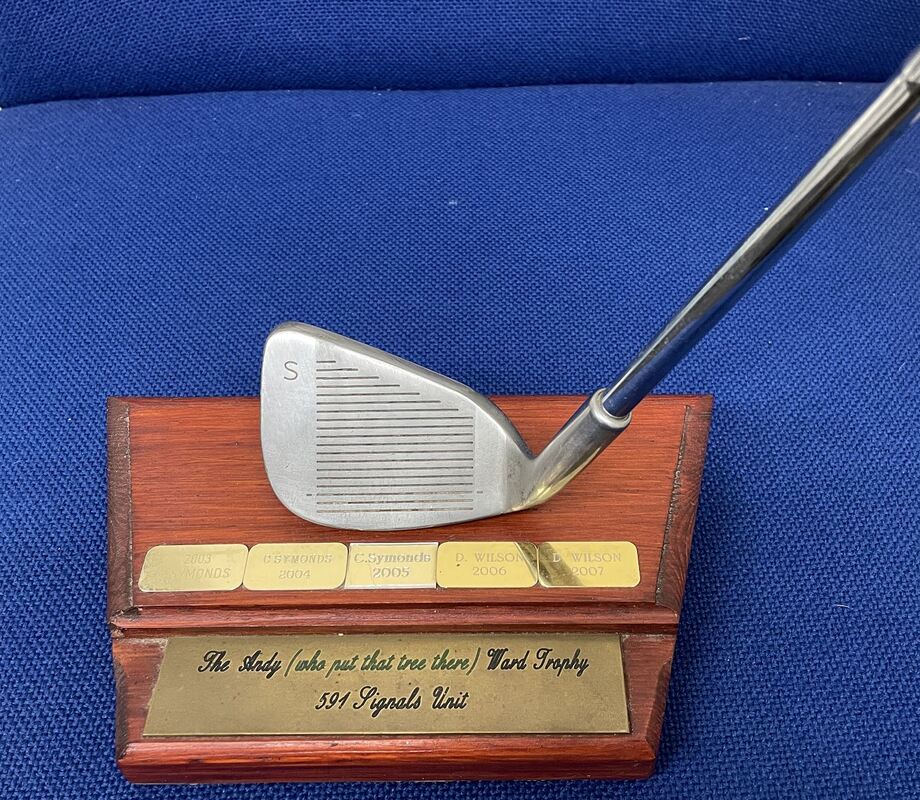
It looks like C. Symonds and D Wilson (to varying degree’s) ruled the roost between 2003 and 2007! Golf, as is sport, is still part of Unit life with Golfers on the Unit competing against players from Coningsby, Marham, Wittering and other locations.
There is also evidence of another Golf Trophy, but in a much less complete state. What’s left of a golden golfer figurine, with a sadly snapped club and missing its trophy base sits amongst the collection. This might be a Trophy that predated The “Andy (who put that tree there) Ward Trophy”. It’s interesting also that in the year 2000, MARCONI are recorded as donating a sum of £100 to the Unit for Golf. So this sport is one that has certainly left a trace over a distinct decade in the Unit archives and is still currently being pursued.
However, so far we don’t know at what level people played at. Noting current wider sporting successes on the Unit, did 591 SU generate any golf stars? Did the Unit compete locally or regionally?
So here I ask do you have any memories of golf or golfing at or on 591 SU? If so the Unit Historian would love to hear from you! If you have any memories, do get in touch by emailing to [email protected]
Remembrance.

As we enter December, there is always time to reflect.
In November, the Unit, its Members and it's Association participated in group and individual acts of Remembrance around the United Kingdom. This year, the Unit also conducted a couple of small ceremonies locally. In the church yards of DIGBY and SCOPWICK two of our personnel, who died in service with 591 SU, lie at rest. A small party including the Units current Unit Warrant Officer visited them.
Remembered were Senior Aircraftsman L. E. Evans, Royal Air Force, resting in the grounds of Digby Church, who died on the 8th of June, 1966, aged 23. His graves inscription reads "Treasured Memories Of a Dear Husband And Father. Loved and Remembered Always."
At Scopwick, Warrant Officer R. A. Whittamore, Royal Air Force lays. Whittamore died on 30th June 1974 aged 53 and had been serving with 591 SU for a second time. His gravestone similarly remembers him with "Treasured Memories Of A Dear Husband And Father. Till We Meet Again."
We remember all those who are no longer with us that served with 591 SU, the Armed Forces and the RAF.
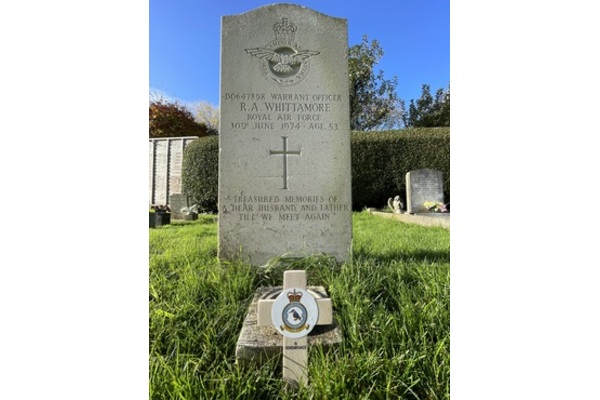
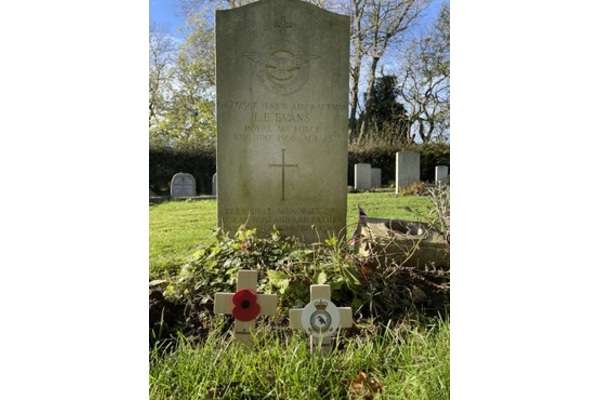
The RAF SIGNALS Museum and RAF Henlow.
As our Unit was formed under 90 (SIGNALS) Group it was one of many technical Units that supported communcations for the RAF. This included the Radio Engineering Unit that was based at RAF Henlow which 591 SU used the services of. Most recently the Unit has engaged with the RAF SIGNALS Museum at RAF Henlow, as sadly with the closure of RAF HENLOW the Museum is having to shut it's doors and disperse the collection.
In their own words from the Museum website:
"As the museum is closing everything must go and to that end enquiries are welcome from museums, radio clubs, WW2 re-enactment groups etc for re-homing these items."
If you are interested and meet their criteria, please do go to their museum web page (https://signalsmuseum.uk/index.html) if you can offer to assist. We will be doing our bit, and pass thanks to the stalwarts who developed and maintained this unique collection.
Our Second OC and Professionalism.
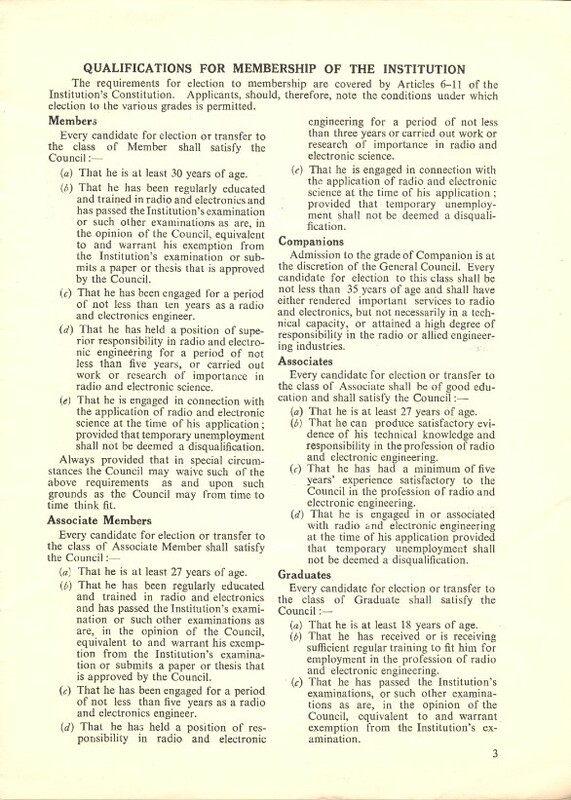
Well, firstly, I know it has been some time since the first post on our first OC, so I thought I would start the second post with a small piece about our second OC Flt Lt Reeder. Reeder had obtained a wartime commission a few months before our first OC, at RAF Cosford in the late winter of 1942.
Prior to rejoining the RAF, his hobbies pointed to a keen interest in Engineering which stood him in good stead for his time on the Unit, both before he became OC and then in his time as OC after he took over from Rider.
It is important to understand the professional rigour and approach that Flt Lt Reeder would have brought to 591 SU after July 1953 when became Officer Commanding. He became responsible for ensuring not insignificant technical and scientific outputs by the Unit were achieved, which would have far reaching effects. This brings me to the image to the left, which is the “Qualifications for membership of the institution” of the Electronic and Radio Engineers (IERE), which was shared with us and is displayed with the courtesy of the Institution of Engineering and Technology (IET) Archive, by their Archivist.
The IET Archives holds the working papers concerning the activities of the IET since its foundation as the Society of Telegraph Engineers in 1871. These also include material from the Institution of Electrical Engineers (IEE), Institution of Electronic and Radio Engineers (IERE), Institution of Incorporated Engineers (IIE) and the Institution of Manufacturing Engineers (IMfgE). Further details can be found online at the IET Archives (theiet.org).
The IET Archives held information showing that Flt Lt Reeder became an Assocate of the IERE in 1953. To qualify as an Associate he would have evidenced that he had technical knowledge and responsibility in radio and electronic engineering, had at least five years experience of this and that he was working in an environment that included radio and electronic engineering.
Reeder became a Member of the IERE in 1958, having to show significant technical knowledge which was evidenced academically. This was backed by at least ten years work as a radio and electronics engineer, either having significant responsibility or carrying out work or research of importance in radio and electronic science. His time and tenure at 591 SU certainly provided evidence of both of these latter requirements, which he needed to qualify for this professional level. It's easy to always look back at history and forget that history is also about looking forward.
And so it is today that the Unit maintains its relationship with the Institute of Engineering and Technology, with the Cyberspace profession holding professional membership across the ranks within the IET. The same technical professionalism that was evidenced by Flt Lt Reeder is still clear to be seen today within the Unit. This also includes engagement with the organisation with attendance at and contributions to the wider Cyberspace trade, with regards to raising the profile of this important aspect of the art of the possible within an RAF career.
Thanks must now go to the IET Archivist for their support, without which this piece would not have been possible.
Now, I have hinted here to more history to come of our proud Unit, and thus it will be so. It will include a beautiful window, our first OC, second OC and our contribution to early Cold War Communications technology. So..Wait. Out!
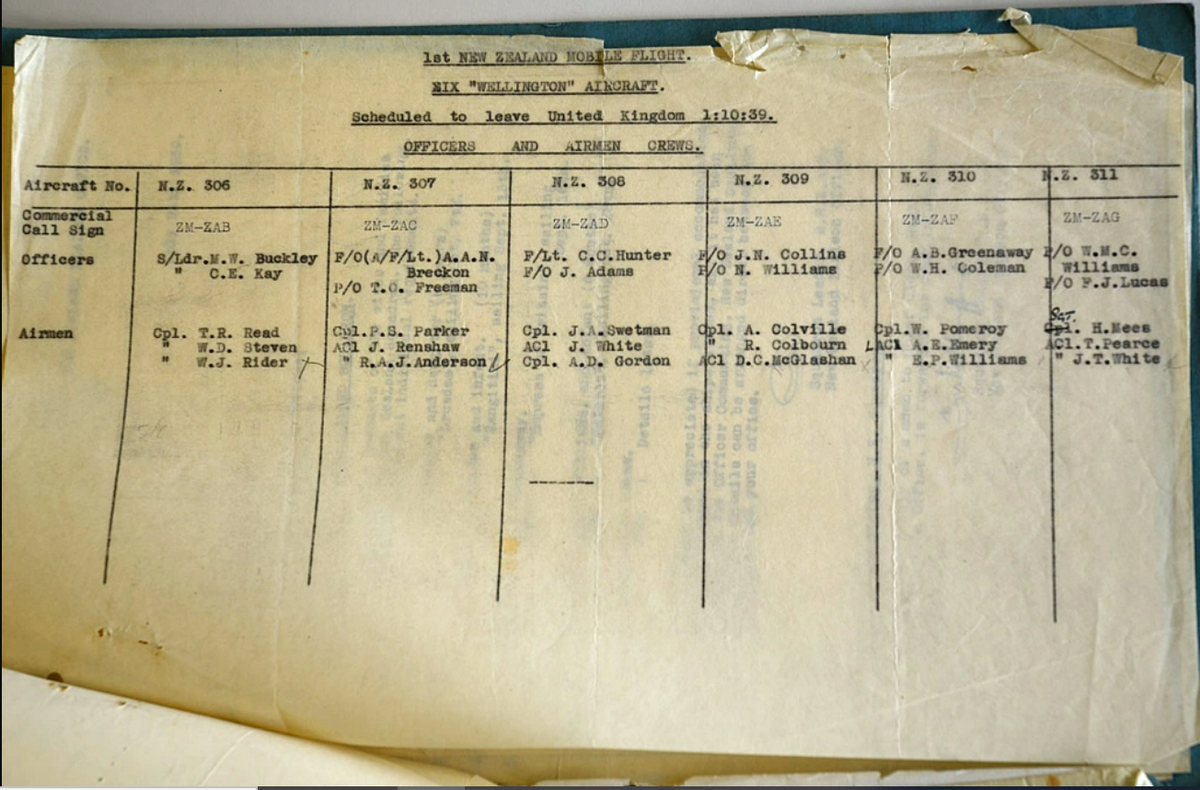
May 25th 2024 - A family connection: Dedicating the Unit Slate in St Clement Danes Church
If you are following the Association X feed (the social media formally known as twitter!) you will have seen that the Unit, Family, Veterans, Friends and Members attended a ceremony to dedicate the 591 SU Slate that has been laid in the church floor. Here, it sits amongst the badges of the Commands, Formations, Units and Squadrons that we have kept watch over, across the seven decades of our existence. I am sure that a write up will follow about this event elsewhere, but I want to share a link between the current Church family and our first Officer Commanding, Flt Lt Rider.
Training with Partners
One of the first bits of research completed on our Unit History was a look at our first OC and his RAF career, which started in 1931 as a Wireless Operator Mechanic. In 1939, a Cpl, Rider volunteered to join the New Zealand Flight at RAF MARHAM where he was placed on training and maintenance duties. The history of this flight is more than amply explained here on this great website: 75(NZ) RAF | 75(nz)squadron (wordpress.com). Basically, William was to train the New Zealand Crews on Wireless Telegraphy and flew with them in their Wellington Bombers. We know this as in a photograph of a New Zealand Flight logbook, obtained from the RNZAF Museum, Cpl Rider flew in Wellington NZ 305 as the W/T operator alongside a Sqn Leader Kay as crew. This was on the 25th of July 1939.
Later on Cpl Rider appeared in the crew itinerary for the flight back to New Zealand in October 1939, in Sqn Ldr C. E. Kay’s aircraft as per the attached photograph from the NZ Archives (Source: 75(NZ) RAF | 75(nz)squadron (wordpress.com)) This was however cancelled due to the outbreak of war and Kay stayed on to command 75 Sqn and Cpl Rider was promoted to Sgt and posted to 238 Sqn at Tangmere.
The rest for us as they say is history, but when I saw a copy of “Oranges and Lemons”, the Magazine of the Friends of the Church there was an article on a family with links to the Church, whose original family name was “Kay”. Sqn Leader Kay had got married in St Clement Danes in 1932 and Kay family descendents are still involved in church life. And there we are indeed, 85 years later, laying a slate for a Unit whose first Commander was someone who flew alongside the father and grandfather of current members of the church!!!!!
This is the first of one of the many stories that I am sure we can share on this page as we go forward, about the Unit we all know and are associated with. Oh! Don’t forget, if you are on X you can follow the association @591SU_Assoc

